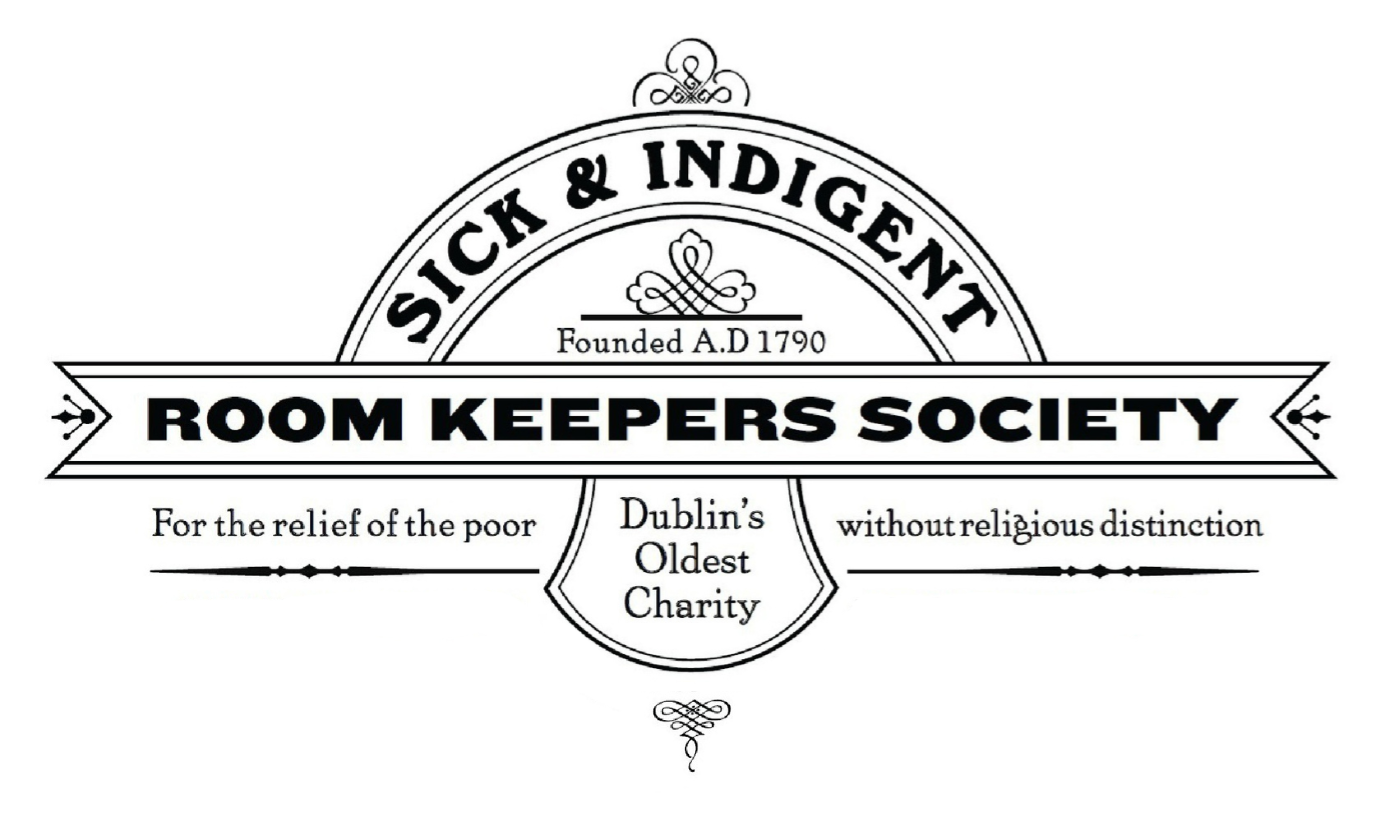Dublin’s Oldest Charity
Deirdre Lindsay, Dublin’s oldest charity: the Sick and Indigent Roomkeepers Society 1790–1990 (Dublin, Anniversary Press, 1990). ISBN: 1870940067
In 1990 to commemorate the foundation of the Society two centuries before, the Board of Trustees of the Society commissioned a history from the historian and author Deirdre Lindsay. Entitled Dublin’s Oldest Charity it dealt with the history of the United Charitable Society for the Relief of Sick and Indigent Roomkeepers (United was dropped in 1798) from 1790 until 1990.
While many will be familiar with the erstwhile headquarters at 2 Palace Street, some may be unfamiliar with the concept of a “Roomkeeper”. The purpose of the Society was to assist those in their own habitation (not homeless people or beggars). To these ends the Trustees would visit people in their own dwelling/room, on the recommendations of Members (annual fee: 8s.8d.), to ascertain the level of poverty and to recommend assistance. Assistance was monetary — to purchase items which could be traded (delft, glass, fruit, vegetables and fish), or to retrieve items from pawn shops (especially tools), or to buy decent clothing (especially important for women seeking employment).
Before permanent premises were acquired in Dame Street in 1841 meetings of the Society, to conduct its business, took place in public houses. With the advent of the Temperance Movement this practice was discontinued (meetings in public houses might be a good indication why women were non-participatory). Eventually 2 Palace Street was acquired in 1856 only to be requisitioned by the military under the Defence of the Realm Order from January 1921 until February 1922. Great inconvenience ensued, not least to those to whom assistance was being offered.
Assistance was often practical — “a thousand pairs of used military blankets”, cast iron camp kettles and other canteen equipment (all in 1801), boots so that children could attend school,
300 spinning wheels, new tools for a carpenter, grants “towards the cost of repairs to one woman’s artificial leg and towards the cost of procuring false teeth for another woman who had all her teeth extracted (1936). Coal was regularly supplied, replaced by turf during ‘the Emergency’.
To ensure the smooth running of the Society and the continuance of its aims, fundraising and the receipt of monetary bequests were essential. Charity Sermons were a vital component of fundraising, given alternately by a Roman Catholic or Anglican clergyman (expressions of political and religious sentiments were forbidden to members of the Society). The Roomkeepers’ Ball was an annual feature but ceased in 1877 due to accusations of a “vulgar orgy”, drunken men AND women, “a gang of inebriated dukes and duchesses” — all accusations were found to be baseless but the balls were discontinued, although a very successful Masked Ball was held in 1988. However, the Society was glad to avail of funding raised by the Grand Juvenile Opera in 1895 but refused funding offered by a play staged by the New Histrionic Society in 1836. In the twentieth century no assistance was accepted from sweepstakes while investing shares in a brewery was similarly declined. However, funds raised through a greyhound meeting were acceptable. Flag days were a popular fund-raiser in the twentieth century, an activity in which women could play a full part. Appeals on RTÉ radio were a regular event. Annual fundraising was achieved through a church collection in Roman Catholic churches in the city of Dublin each November (still active) and through the Lenten Appeal (active until the 1970s).
Funding was accepted from private benefactors, through the Administration in Dublin Castle, with once-off fund-raising by the Civil Service in 1921, and through the Lords Mayor who were individual subscribers. Those who had been in receipt of assistance, once better times ensued, became benefactors to the Society.
This is a well-researched and well written publication. Extensive use has been made of the Roomkeepers' own records. The book commences with an Introduction, is divided into six chapters and concludes with three Appendices and an Index. Many readers will be interested in Appendix 1, "A history of number 2 Palace Street" while others may be interested in further Appendices naming those involved in the work of the organisation from the 1790s until 1990. The book is highly recommended.
The preface of the book contains a sentence which is as valid today as it was over thirty years ago: “It faces its third century with confidence that its work in relieving poverty and distress will be pursued even more intensively than before”. The preface concludes with this paragraph:
In bringing this work before the public, the Trustees are deeply conscious that it served not merely as a tribute to the endeavours of their predecessors, but also as a token of appreciation for the donations and bequests made to the Society through the generosity of the people of Dublin and of the whole of Ireland.
The Society looks forward to its two-hundred-and-fiftieth anniversary in 2040 although this is a stark reminder that poverty is still endemic in Dublin.
Aideen Ireland
